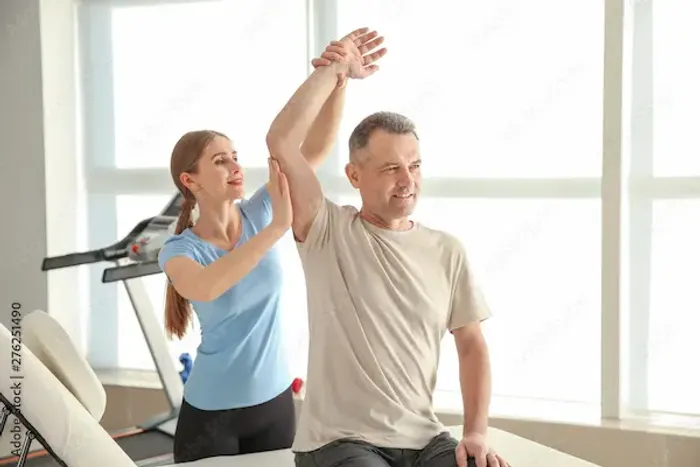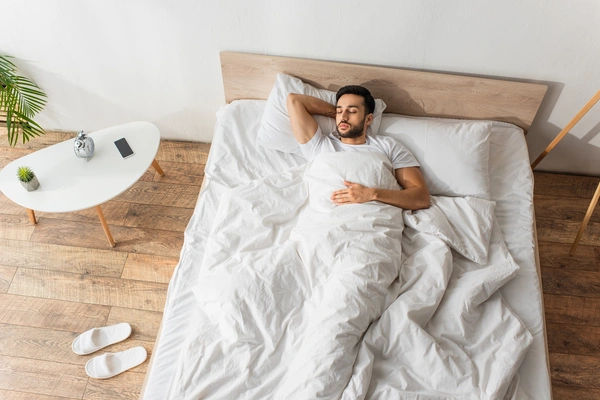Guide to Physiotherapy
Discover how physiotherapy supports pain relief, recovery, and better movement. Learn what happens in a session, which conditions benefit, and practical at-home tips to keep you active and confident every day.

Written by Dr. Dhankecha Mayank Dineshbhai
Reviewed by Dr. J T Hema Pratima MBBS
Last updated on 27th Oct, 2025

Introduction
Physiotherapy helps you move better, feel stronger, and get back to the activities you love—whether that means chasing your children, returning to sport, or simply walking without pain. If you’re curious about what physiotherapy involves, what happens during a session, or which conditions it can help, this guide explains everything in clear, everyday language.
You’ll learn how physiotherapists assess your movement, create a personalised plan, and coach you through exercises that improve strength, mobility, balance, and endurance. We’ll also explore specialised areas such as pelvic floor, sports, neurological, and cardiorespiratory physiotherapy, plus how tele-physiotherapy can fit into busy schedules. Along the way, you’ll find expert-backed insights, examples, and safety advice, including when to see a doctor. By the end, you’ll understand how physiotherapy supports recovery, reduces pain, and builds long-term resilience—so you can move with confidence every day.
Consult a Top General Practitioner for Personalised Advice
What Is Physiotherapy?
This section explains the foundations of physiotherapy—how it helps restore movement, reduce pain, and support
lifelong health.
Physiotherapy is a science-based healthcare profession focused on restoring, maintaining, and improving movement and
function across all ages. You may also hear the term “physical therapy,” especially in the United States, but the
approach and goals remain the same.
At its heart, physiotherapy aims to reduce pain, improve strength and mobility, and empower you with knowledge and
exercises to self-manage your condition. It involves assessment, education, and targeted exercise, often supported by
manual therapy and selective use of modalities.
Physiotherapy is a collaborative process. Your therapist will work with you to set meaningful goals—like walking your
dog without discomfort or returning to your favourite sport—and build a plan that fits your lifestyle. Because treatment
focuses on function, not just symptoms, it helps address root causes for sustainable improvement.
Conditions Physiotherapy Treats
This section highlights the wide range of health issues physiotherapy can help manage or improve.
Musculoskeletal Physiotherapy
Covers back pain, neck pain, frozen shoulder, knee osteoarthritis, hip pain, and foot or ankle injuries. Evidence supports
staying active and using targeted exercise to manage pain and stiffness while improving daily function.
Neurological Physiotherapy
Helps individuals recovering from stroke, Parkinson’s disease, multiple sclerosis, or spinal cord injury. Techniques
include balance training, task-specific practice, and exercises that retrain lost movement skills.
Cardiorespiratory Physiotherapy
Supports people with COPD, post-COVID recovery, or after cardiac surgery. It focuses on breathing techniques, airway
clearance, and graded aerobic exercise to improve stamina.
Pelvic Floor and Women’s Health Physiotherapy
Addresses urinary incontinence, pelvic pain, prolapse, and postnatal recovery using muscle training and education on
healthy bladder and bowel habits.
Paediatric and Geriatric Physiotherapy
Paediatric care assists with developmental delays and mobility challenges, while geriatric physiotherapy focuses on
maintaining independence, preventing falls, and managing arthritis and osteoporosis.
If symptoms persist beyond two weeks or you notice new weakness or numbness, consult a doctor online with Apollo24
|7 for further assessment.
What Happens in a Physiotherapy Session?
This section outlines what to expect during your physiotherapy appointment—from assessment to treatment planning.
A typical session begins with a thorough assessment, including a detailed history of your symptoms, work, activity
levels, and lifestyle. The physiotherapist then observes your movement, tests strength and flexibility, and performs
specific checks to pinpoint the problem.
Once the assessment is complete, you’ll set realistic goals together and develop a treatment plan. This often includes
guided exercises, education, and possibly hands-on therapy to support comfort and movement.
Most people attend 1–2 sessions per week for several weeks, supported by a home exercise programme (HEP).
Following through at home is vital—link your exercises to daily habits to improve consistency. If progress stalls, book a
consultation with a doctor via Apollo24|7 to review your plan.
Evidence-Based Treatments and Techniques
This section explores the proven methods that underpin effective physiotherapy practice.
Exercise Therapy
Exercise is the foundation of physiotherapy. Strength, mobility, and balance training improve pain, function, and
endurance across many conditions, from back pain to arthritis.
Manual Therapy
Joint mobilisation and soft-tissue techniques may reduce pain and improve short-term mobility. These are best
combined with exercise for long-term benefits.
Education and Self-Management
Understanding your condition helps you manage it confidently. Physiotherapists teach pacing, posture, and movement
strategies to prevent flare-ups.
Modalities and Tools
Techniques such as TENS, ultrasound, or taping can support short-term relief and comfort during active rehabilitation.
Unique insight: Pair short-term symptom relief (like TENS) with active exercise immediately after to translate comfort
into lasting improvement.
At-Home Physiotherapy: Practical Exercises and Self-Care
This section provides safe, simple exercises and tips to support recovery at home.
For Back Pain
Perform gentle movements every hour—pelvic tilts, cat-camel stretches, and core strengthening.
For Knee Osteoarthritis
Focus on quadriceps and hip strengthening, combined with low-impact aerobic exercise like walking or cycling.
For Shoulder Mobility
Start with pendulum swings and table slides, progressing to gentle strengthening as mobility improves.
Self-care matters: good sleep, manageable stress, and gradual progress are essential. If pain worsens or new symptoms
arise, seek medical advice via Apollo 24|7.
Specialised Physiotherapy Areas
This section highlights advanced branches of physiotherapy designed for specific needs.
Sports Physiotherapy
Supports athletes with injury prevention, load management, and rehabilitation. Programmes often include strength,
mobility, and sport-specific drills.
Pelvic Floor Physiotherapy
Helps restore pelvic control and relieve pain through tailored exercises and breathing coordination.
Neurological Physiotherapy
Improves movement, balance, and independence after stroke or neurological injury.
Cardiorespiratory Physiotherapy
Focuses on breath control, airway clearance, and safe aerobic exercise after illness or surgery.
Geriatric Physiotherapy
Helps older adults maintain strength, stability, and independence through targeted balance and endurance training.
Unique insight: Combine breathing exercises with gentle upper-body movements to improve stamina and reduce
fatigue.
Tele-Physiotherapy and Digital Rehab
This section explains how virtual physiotherapy works and when it’s most effective.
Tele-physiotherapy uses video consultations and digital tools for assessment, exercise guidance, and progress tracking.
It’s especially useful for mild to moderate musculoskeletal conditions or follow-up sessions.
When It Works Best
For clear, stable conditions that need coaching rather than manual therapy.
When to Opt for In-Person Care
If you have red flags, neurological symptoms, or need a detailed hands-on examination.
Unique insight: Set micro-goals—small weekly improvements in repetitions or walking distance—to stay motivated and
track progress remotely.
Choosing a Physiotherapist and Understanding Costs
This section guides you on selecting the right professional and understanding what affects costs.
Look for qualified physiotherapists registered with professional bodies (such as the Chartered Society of Physiotherapy
in the UK). Ask about their experience and specialisms related to your condition.
Cost and Access
In the UK, you may access physiotherapy through the NHS or private clinics. Waiting times and pricing can vary
depending on region and coverage.
Session Planning
Treatment duration depends on the condition and your goals. Many people see improvements within 4–8 weeks. Ask
your therapist for clear “graduation criteria” to know when you can transition to self-management.
Safety, Risks, and Red Flags
This section outlines when physiotherapy is safe and when you should seek medical review.
Mild muscle soreness is normal as your body adapts to new exercises. Stop if you experience sharp pain, night pain, or
numbness. Seek medical help if you develop sudden weakness, unexplained weight loss, or bladder/bowel changes.
If symptoms persist beyond two weeks, consult a doctor online with Apollo24|7. Physiotherapy and medication often
work best when combined under medical supervision.
Unique insight: A clear communication line between your doctor and physiotherapist ensures safe, coordinated progress
and reduces relapse risk.
Conclusion
Physiotherapy is an evidence-based, practical path to restoring movement, reducing pain, and improving function.
Through assessment, personalised exercise, and education, you can achieve meaningful results that last.
Hands-on therapy and modalities can ease symptoms, but active rehabilitation delivers the strongest long-term improvements. Whether through in-person sessions, digital rehab, or home exercises, consistency is key.
If progress slows or red flags appear, consult a doctor online with Apollo 24|7 to review your plan and access supportive services like vitamin D or HbA1c testing. Physiotherapy empowers you to move freely, live actively, and take control of your health—every day.
Consult a Top General Practitioner for Personalised Advice
Consult a Top General Practitioner for Personalised Advice

Dr. Tapabrata Ray
General Physician/ Internal Medicine Specialist
4 Years • MBBS,DGM,CPMeC,ACMDC
Kolkata
MCR SUPER SPECIALITY POLY CLINIC & PATHOLOGY, Kolkata
Dr. Naziya Rahim Bhatia
General Surgeon
7 Years • MBBS ,MS
Bengaluru
Apollo Clinic, Sarjapur Road, Bengaluru

Dr. Utsa Basu
Diabetologist
14 Years • MBBS, MD
Kolkata
Dr Utsa Basu Clinic, Kolkata
(400+ Patients)

Dr. Sougata Kumar
General Practitioner
8 Years • MBBS
East Midnapore
VIVEKANANDA SEBA SADAN, East Midnapore

Dr. Arif Ahmed
General Physician/ Internal Medicine Specialist
9 Years • MBBS, MD (Genl. Med.)
Kolkata
MCR SUPER SPECIALITY POLY CLINIC & PATHOLOGY, Kolkata
Consult a Top General Practitioner for Personalised Advice

Dr. Tapabrata Ray
General Physician/ Internal Medicine Specialist
4 Years • MBBS,DGM,CPMeC,ACMDC
Kolkata
MCR SUPER SPECIALITY POLY CLINIC & PATHOLOGY, Kolkata
Dr. Naziya Rahim Bhatia
General Surgeon
7 Years • MBBS ,MS
Bengaluru
Apollo Clinic, Sarjapur Road, Bengaluru

Dr. Utsa Basu
Diabetologist
14 Years • MBBS, MD
Kolkata
Dr Utsa Basu Clinic, Kolkata
(400+ Patients)

Dr. Sougata Kumar
General Practitioner
8 Years • MBBS
East Midnapore
VIVEKANANDA SEBA SADAN, East Midnapore

Dr. Arif Ahmed
General Physician/ Internal Medicine Specialist
9 Years • MBBS, MD (Genl. Med.)
Kolkata
MCR SUPER SPECIALITY POLY CLINIC & PATHOLOGY, Kolkata
More articles from General Medical Consultation
Frequently Asked Questions
1) What happens in a physiotherapy session?
You’ll discuss your symptoms and goals, complete movement and strength tests, and receive a tailored treatment plan and home exercise routine.
2) How many physiotherapy sessions do I need?
It varies by condition and goals. Many short-term issues improve within 4–8 weeks; chronic ones may take longer.
3) Which is better: manual therapy or exercise?
Exercise offers the best long-term benefits. Manual therapy supports pain relief and mobility, but works best alongside exercise.
4) Can I do physiotherapy at home?
Yes, with structured guidance and regular follow-up. Tele-physiotherapy works well for many musculoskeletal problems.
5) Is physiotherapy safe if I have arthritis or osteoporosis?
Yes, when tailored to your needs. Strength, balance, and gentle aerobic activity improve safety and function. If pain worsens, seek advice from a doctor via Apollo24|7.


.webp)

